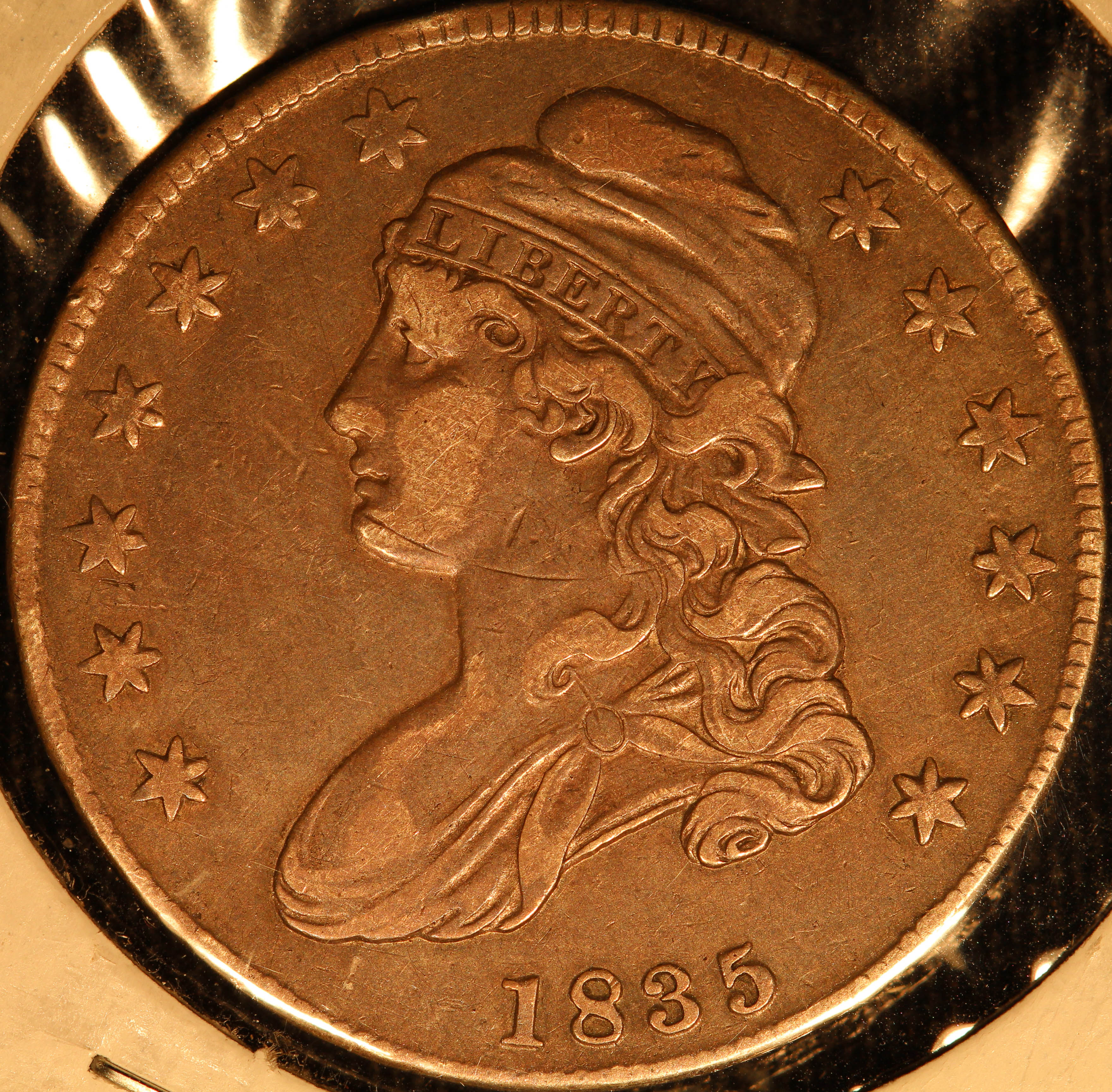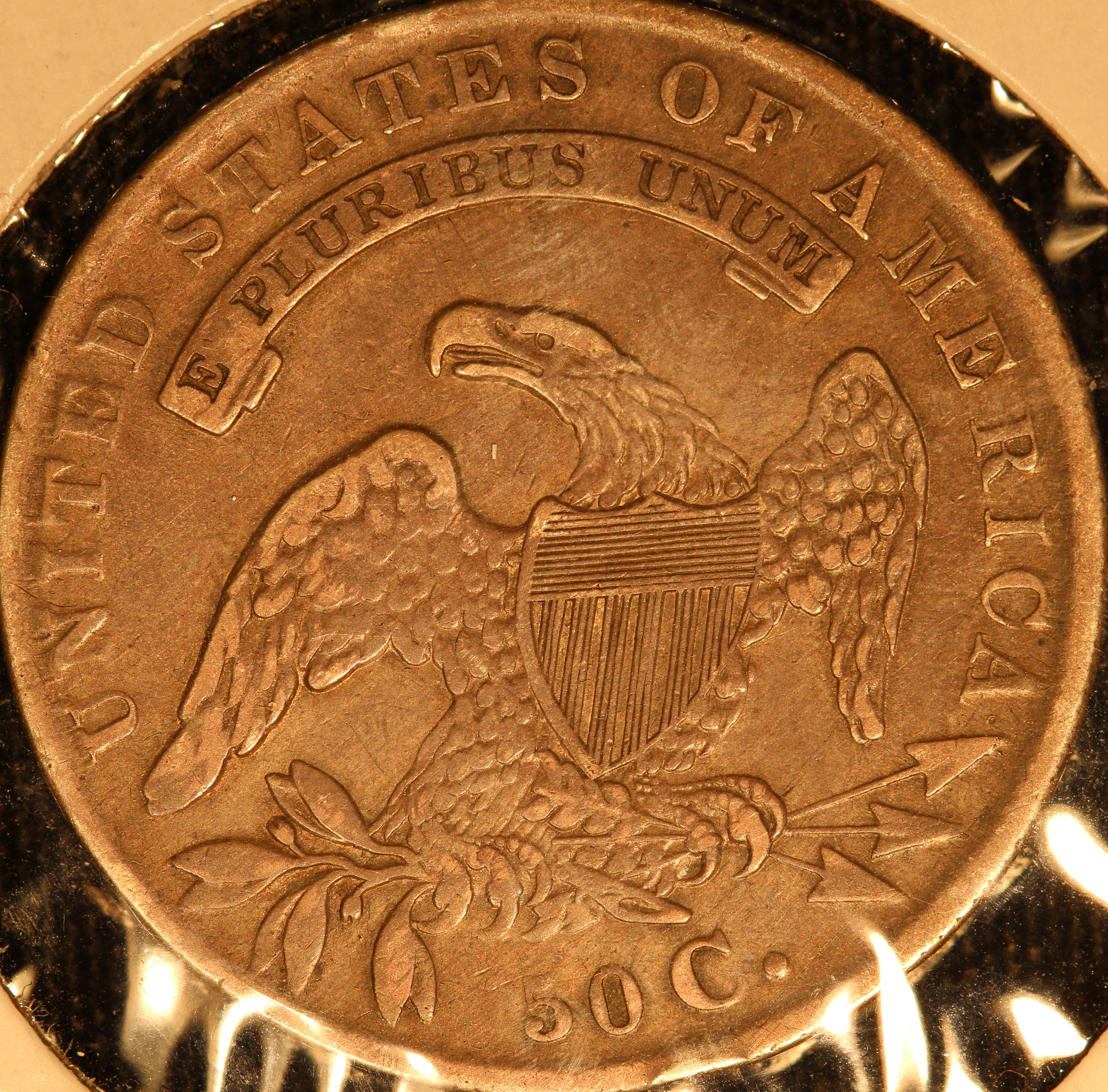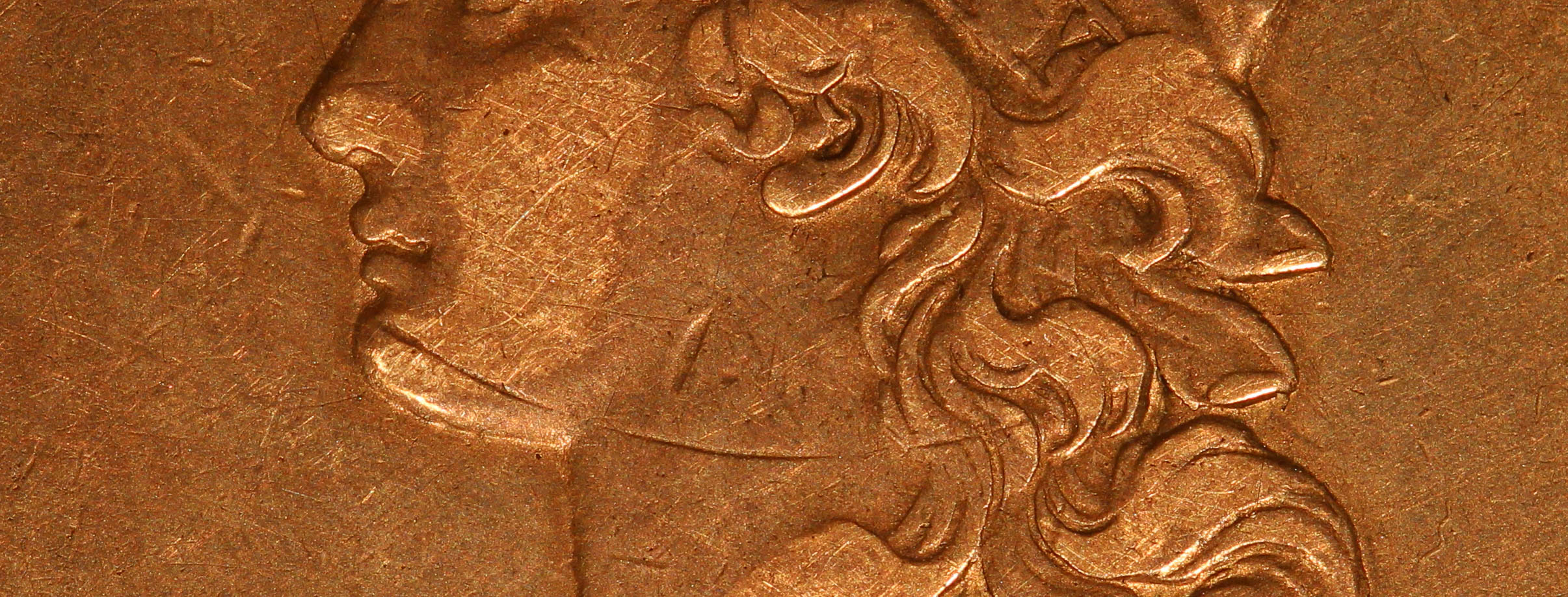Is this bust half double struck?
 TPRC
Posts: 3,814 ✭✭✭✭✭
TPRC
Posts: 3,814 ✭✭✭✭✭
I am pretty familiar with double struck bust half coinage, and I am also familiar with the fact that PCGS will not designate a coin as double struck without evidence of the double strike on both sides of the coin. On the other hand, bust half collectors readily accept coins as double struck even if the evidence is only present on one side of the coin. I have spoken with many in the bust half collectors, of which I consider myself a member, as well as with Fred Weinberg who, I understand, authenticates these coins for PCGS. I assume things have not changed much in the last couple of years.
My question is is the bust half shown below double struck? It shows a clear arc on one side of the coin which I cannot imagine being done post mint. On the other hand, there is no evidence whatsoever of any double strike on the reverse, and there is no evidence of any dentils as part of the arc. Normally when I have seen a double struck bust half, an impression of the dentils accompanies the arc. I see no such evidence here, even under a scope.
I know PCGS would not designate it as such, and I know it is relatively minor, but is it double struck by bust half collector standards?



Tom
Comments
The arc is an incuse line that does not appear to match the radius of the coin.
So it seems more likely to be PMD.
I agree with the PMD theory too. An arc of dentil tracks could represent adouble strike, but the edge of the coin would not be smooth. I have seen a few examples of smooth arcs like this suggested with partially punched planchets, but this arc is only on the high points. So i agree with yosclimber its likely Post mint damage.
PMD
All comments reflect the opinion of the author, even when irrefutably accurate.
I agree with the others.
Some events that happened in the year your coin was struck, that was a lot of money then! https://en.wikipedia.org/wiki/1835_in_the_United_States
Another vote for PMD
I vote for PMD.... does not have characteristics of a double struck error. Cheers, RickO
At first Ii looked like a clash from the banner.........:(
PMD
im in the pmd camp as well
As @yosclimber says, the incuse line does not match the radius of the coin, and there is no mark on the reverse. If it was a planchet cutting error, it would look something like the quarter below:
I agree with @GoBust about an arc of dentil tracks representing a double strike (which this isn't), but PCGS will not recognize dentil tracks as a double strike despite what I think is a majority of numismatists that do think its the result of a double strike.
This 1835 half seems to have PMD.
1TwoBits
Thank you all. PMD it is.
Tom